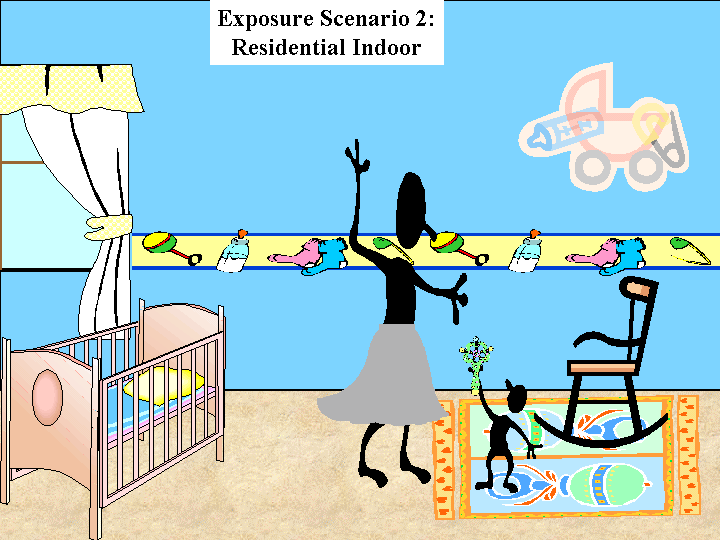
![]() 4.0 Scenarios
4.0 Scenarios
4.1 Life Stages
4.2 Scenario 1
Model Flow Diagram 1
4.3 Scenario 2
Model Flow Diagram 2
4.4 Scenario 3
Model Flow Diagram 3
4.5 Scenario 4
Model Flow Diagram 4
4.6 Process Flow
4.7 Gap Analysis
4.3 Scenario 2


Scenario 1
Scenario 2
Scenario 3
Scenario 4
Scenario 2
This section provides the conceptual model for the exposure pathways associated with Exposure Scenario 2. The conceptual model and associated assumptions are critical in determining the type of the models, algorithms, and databases required to satisfy the needs of the modeling scenario. Figure 4.3.2 provides an illustration of the conceptual model for Exposure Scenario 2.
Residential Indoor Description
- 1-story Townhouse with 1700 ft2 in MA
- Electric heat pump, forced air and AC
- 3 bedrooms, 1.5 baths, kitchen, living & dining rooms
Exposure in Home to SVOC Compound Group C
- Compound Group C: phthalate esters (DEHP, BBP, & DINP) in plastic
- DEHP: diethyl hexyl phthalate
BBP: butyl benzyl phthalate
DINP: diisononyl phthalate
- Exposure to phthalates in plastic food wrap and containers
- Exposure to phthalates in plastic toys

Assumptions about Exposures and Activities
- Nursing from birth until 0.5 yrs (6 months)
- Standard growth patterns
- Standard lactation and nursing patterns
Child Age Timeline
- Newborn (birth- 0.25 yrs) (3 months)
- Infant (0.25-2 years)
- Toddler (2-3 years)
- Early Childhood (3-6 years)
- Late Childhood (6-12 years)
- Early Teenager (12-15 years)
- Late Teenager (15-18 years)
Figure 4.3.3 CCEF Model Flow Diagram Scenario 2
